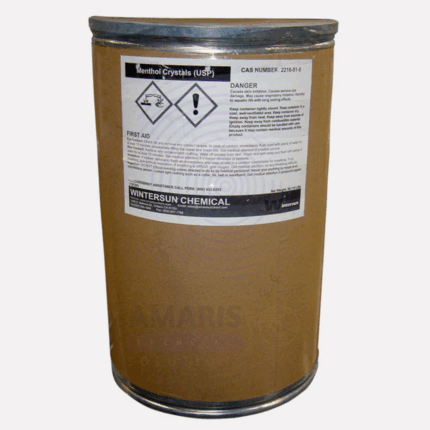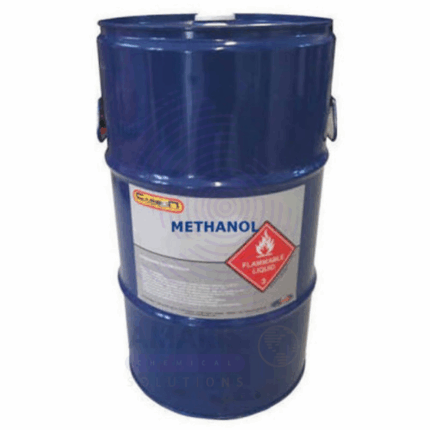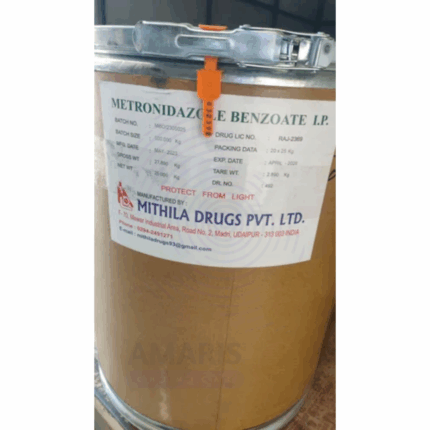Stevia 25kg
Stevia 25kg refers to a bulk packaging format of high-purity stevia extract, a natural, zero-calorie sweetener derived from the leaves of Stevia rebaudiana. It contains steviol glycosides—primarily Rebaudioside A and Stevioside—which are responsible for its intense sweetness. Stevia is widely used as a sugar substitute in food and beverage formulations, offering a healthier alternative for calorie-conscious and diabetic consumers. This product is typically available in powder or granular form, suitable for large-scale commercial use.
Uses
Primary Uses
Food & Beverage Industry
- Sugar Substitute: Used in soft drinks, juices, flavored waters, and alcoholic beverages as a non-caloric sweetener.
- Baking and Confectionery: Provides sweetness in baked goods, chocolates, candies, and chewing gum without contributing to blood sugar spikes.
- Dairy Products: Used in yogurt, flavored milk, and ice creams to reduce sugar content.
- Processed Foods: Added to cereals, sauces, and snacks as a natural sweetening agent.
Nutraceuticals & Dietary Supplements
- Health Supplements: Included in weight management and diabetic-friendly formulations.
- Tabletop Sweeteners: Packaged in sachets or tablets for direct consumer use.
Secondary Uses
Pharmaceutical Industry
- Excipient: Used as a sweetening agent in syrups, lozenges, and chewable tablets.
Personal Care Products
- Oral Care: Found in toothpaste and mouthwash formulations for sweetness without contributing to dental caries.
Animal Feed
Flavor Enhancer: Occasionally used in pet or livestock supplements for palatability.
Basic Identification Attributes
- Chemical Name (IUPAC): Steviol glycosides
- Common/Trade Name: Stevia
- CAS Number: 57817-89-7 (for Rebaudioside A)
- HS Code: 2938.90.90
- Synonyms: Stevia extract, Steviol glycoside, Rebaudioside A, Stevioside
Physical & Chemical Properties
- Physical State: Fine powder or crystalline solid
- Color & Odor: White to off-white; mild, neutral odor
- Taste Profile: 200–400 times sweeter than sucrose
- Melting Point: Decomposes above 200 °C (varies by purity)
- Solubility: Soluble in water; insoluble in oils
- pH (1% solution): 4.5–7.0
Safety & Hazard Attributes
- GHS Classification: Not classified as hazardous
- Toxicity: Non-toxic at approved intake levels
- ADI (Acceptable Daily Intake): 0–4 mg/kg body weight (as steviol equivalents)
- Exposure Limits: No established occupational exposure limits
Storage & Handling Attributes
- Storage Conditions: Store in a cool, dry, and dark place away from direct sunlight and moisture
- Container Type: Food-grade, sealed 25kg bags or drums (typically double-lined with polyethylene)
- Shelf Life: 24–36 months under proper storage
- Handling Precautions: Avoid humidity; reseal packaging after each use
Regulatory & Compliance Attributes
- Complies with FAO/WHO JECFA standards for food additives
- Approved by FDA as Generally Recognized as Safe (GRAS) for food use
- Conforms to EU (EFSA) regulations for steviol glycosides
- Listed in China GB 2760, India FSSAI, Japan FOSHU guidelines
- Meets Kosher and Halal certification standards
- Manufactured under GMP, ISO 22000, and HACCP standards
Environmental & Health Impact
- Biodegradability: Biodegradable under normal conditions
- Ecotoxicity: Low toxicity to aquatic life
- Bioaccumulation: Not bioaccumulative
Sustainability: Derived from renewable plant sources
Safety Handling Precautions
- PPE Required: Gloves, dust mask, and protective eyewear recommended
- Handling Guidelines: Avoid dust inhalation; ensure proper ventilation in processing areas
- Storage Measures: Keep sealed in original packaging; store in pest-free area
First Aid Measures
- Inhalation: Move to fresh air; seek medical advice if symptoms occur
- Skin Contact: Wash with soap and water if irritation develops
- Eye Contact: Rinse thoroughly with water; consult physician if irritation persists
- Ingestion: Non-toxic; rinse mouth and drink water if large quantities are consumed
Firefighting Measures
- Fire Hazards: Combustible dust; may form explosive dust-air mixtures
- Extinguishing Media: Water spray, dry chemical, or CO₂ extinguishers
Hazardous Combustion Products: Carbon monoxide, carbon dioxide


 Acidulants
Acidulants Antioxidants
Antioxidants Nutraceutical Ingredients (food)
Nutraceutical Ingredients (food)
 Collectors
Collectors Dust Suppressants
Dust Suppressants Explosives and Blasting Agents
Explosives and Blasting Agents Flocculants and Coagulants
Flocculants and Coagulants Frothers
Frothers Leaching Agents
Leaching Agents pH Modifiers
pH Modifiers Precious Metal Extraction Agents
Precious Metal Extraction Agents
 Antioxidants(plastic)
Antioxidants(plastic) Colorants (Pigments, Dyes)
Colorants (Pigments, Dyes) Fillers and Reinforcements
Fillers and Reinforcements Flame Retardants
Flame Retardants Monomers
Monomers Plasticizers
Plasticizers Polymerization Initiators
Polymerization Initiators Stabilizers (UV, Heat)
Stabilizers (UV, Heat)
 Antifoaming Agents
Antifoaming Agents Chelating Agents
Chelating Agents Coagulants and Flocculants
Coagulants and Flocculants Corrosion Inhibitors
Corrosion Inhibitors Disinfectants and Biocides
Disinfectants and Biocides Oxidizing Agents
Oxidizing Agents pH Adjusters
pH Adjusters Scale Inhibitors( water)
Scale Inhibitors( water)
 Antioxidants(cosmetic)
Antioxidants(cosmetic) Emollients
Emollients Fragrances and Essential Oils
Fragrances and Essential Oils Humectants
Humectants Preservatives
Preservatives Surfactants(cosmetic)
Surfactants(cosmetic) Thickeners
Thickeners UV Filters
UV Filters
 Fertilizers
Fertilizers Soil Conditioners
Soil Conditioners Plant Growth Regulators
Plant Growth Regulators Animal Feed Additives
Animal Feed Additives Biostimulants
Biostimulants Pesticides (Herbicides, Insecticides, Fungicides)
Pesticides (Herbicides, Insecticides, Fungicides)
 Active Pharmaceutical Ingredients (APIs)
Active Pharmaceutical Ingredients (APIs) Excipients
Excipients Solvents(pharmaceutical)
Solvents(pharmaceutical) Antibiotics
Antibiotics Antiseptics and Disinfectants
Antiseptics and Disinfectants Vaccine Adjuvants
Vaccine Adjuvants Nutraceutical Ingredients (pharmaceutical)
Nutraceutical Ingredients (pharmaceutical) Analgesics & Antipyretics
Analgesics & Antipyretics
 Analytical Reagents
Analytical Reagents Chromatography Chemicals
Chromatography Chemicals Spectroscopy Reagents
Spectroscopy Reagents Molecular Biology Reagents
Molecular Biology Reagents Biochemical Reagents
Biochemical Reagents Inorganic and Organic Standards
Inorganic and Organic Standards Laboratory Safety Chemicals
Laboratory Safety Chemicals Specialty Laboratory Chemicals(Special Laboratory Equipment)
Specialty Laboratory Chemicals(Special Laboratory Equipment)
 Demulsifiers
Demulsifiers Hydraulic Fracturing Fluids
Hydraulic Fracturing Fluids Scale Inhibitors(oil)
Scale Inhibitors(oil) Surfactants(oil)
Surfactants(oil) Drilling Fluids
Drilling Fluids
 Dyes and Pigments
Dyes and Pigments Bleaching Agents
Bleaching Agents Softening Agents
Softening Agents Finishing Agents
Finishing Agents Antistatic Agents
Antistatic Agents
 Admixtures
Admixtures Waterproofing Agents
Waterproofing Agents Sealants and Adhesives
Sealants and Adhesives Curing Compounds
Curing Compounds Concrete Repair Chemicals
Concrete Repair Chemicals Anti-Corrosion Coatings
Anti-Corrosion Coatings
 Surfactants(cleaning)
Surfactants(cleaning) Builders
Builders Enzymes
Enzymes Solvents (Cleaning)
Solvents (Cleaning) Fragrances
Fragrances
 Electronic Chemicals
Electronic Chemicals Catalysts
Catalysts Lubricants
Lubricants Photographic Chemicals
Photographic Chemicals Refrigerants
Refrigerants Automotive chemicals
Automotive chemicals Pyrotechnic Chemicals
Pyrotechnic Chemicals
 Biodegradable Surfactants
Biodegradable Surfactants Bio-based Solvents
Bio-based Solvents Renewable Polymers
Renewable Polymers Carbon Capture Chemicals
Carbon Capture Chemicals Wastewater Treatment Chemicals
Wastewater Treatment Chemicals
 Pigments
Pigments Solvents(paint)
Solvents(paint) Specialty Coatings
Specialty Coatings Binders/Resins
Binders/Resins Additives
Additives Driers
Driers Anti-Corrosion Agents
Anti-Corrosion Agents Functional Coatings
Functional Coatings Application-Specific Coatings
Application-Specific Coatings
 Fresh Herbs
Fresh Herbs Ground Spices
Ground Spices Whole Spices
Whole Spices Spice Blends
Spice Blends Dried Herbs
Dried Herbs
 Leavening Agents
Leavening Agents Dough Conditioners
Dough Conditioners Flour Treatments
Flour Treatments Fat Replacers
Fat Replacers Decoratives
Decoratives Preservatives(baking)
Preservatives(baking)
 Plasticizers & Softeners
Plasticizers & Softeners Reinforcing Agents
Reinforcing Agents Adhesion Promoters
Adhesion Promoters Vulcanizing Agents
Vulcanizing Agents Antidegradants
Antidegradants Blowing Agents
Blowing Agents Fillers & Extenders
Fillers & Extenders Accelerators & Retarders
Accelerators & Retarders






















